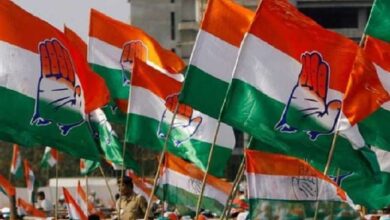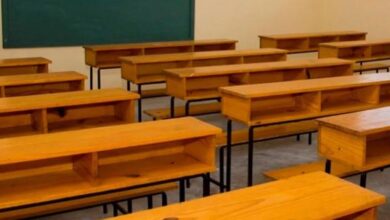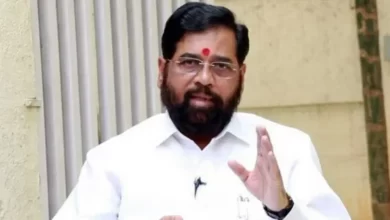Need for comprehensive survey of new education policy

[ad_1]
Among the many positive and negative aspects of the New Education Policy, 2020, the policy-makers of the country must also incorporate the current challenges.
Manish Jaisal
Among the many positive and negative aspects of the New Education Policy, 2020, the policy-makers of the country must also incorporate the current challenges. The condition is that in spite of more than a hundred years of media education in the country, people seem to be involved in bloodshed citizens with a well-publicized message. A big democratic country like India is trying to take its education system to the international level, what will be good for the citizen here!
Every student of the country should develop basic literacy and conceptual understanding while developing their all-round development with their unique ability, identity, with this goal, the Government of India had decided to implement the new education policy last year. The action plan, which is said to be multidimensional, was made keeping in mind Goal Four of the Sustainable Development Agenda 2030 adopted in 2015, in which the Global Education Development Agenda is proposed. It recognizes the need to ensure inclusive and equitable quality education for all by 2030 and promote opportunities for lifelong education.
Any healthy society can be assessed by the availability of accessible education system for the students in that society. Dr. Bhimrao Ambedkar, who gave the world’s largest written constitution to the country, faced the crisis of this system in his student life. Despite this, famous personalities of the world became famous for their deeds. In the beginning of the new education policy, it has been clarified that in this, flexibility, multilingualism, ethics, humanism, constitutional values, life skills, connection to the roots of Indianness, etc. will be adopted prominently. This is the reason that along with Indian languages, there will also be arrangements for the study of Korean, German, Portuguese, Russian and other foreign languages, so that a student can understand the global scenario in the respective language.
One of the things that has been kept prominent in the formulation of the New Education Policy, 2020 is to give knowledge of words, sounds, colors, shapes, numbers etc. to children from class one. It is possible for a school to teach a lot of this to its students in a smart classroom in lieu of expensive fees charged by private schools, but it should be clear how the government sees this point amidst the dilapidated system of government schools. Even today in the country, the difference between ‘S’, ‘S’ and ‘S’ is not hidden from anyone, in which way a primary teacher explains to the students. The teacher confused between the ‘S’ with the pliers and the ‘S’ with the hexagon, how the student will grow up to become a good learner of Indian languages, unless the teacher will not express the word sound correctly in that primary class. At the same time, will the government be able to provide the basic needs of the teacher for sounds, colors and shapes, so that he can explain to the student of class I in this technological age?
When this new education policy was ready, at the same time the havoc of Corona came among us in the country. As a result, while 20 per cent of school children drop out in the middle, their number has gone up to eighty per cent. Schools are not fully open for almost two years. What is the moral responsibility of government school teachers to maintain the activeness of the studies of those students, it is the subject of research. There is also one aspect that ever since the corona epidemic has spread, government teachers like other departments have been engaged as assistants. They teach in class groups where the percentage of digital media penetration has dropped significantly.
The most important topic of discussion of the new education policy is also the point that the students studying in class six to eight should participate in the ten-day classless class and do local vocational work like carpenter, gardener, potter and other household tools related work. I am said to be proficient. It is worth mentioning here that most of the students studying in primary school are laborers, farmers and from lower middle class families. In such a situation, after learning these works, what is the guarantee that the people of his family, who themselves are struggling for two times’ bread, will not engage them in the same work? Somewhere it seems like promoting the violation of the rights of child labor. There is also the other aspect that if this curriculum is implemented equally in all the schools of the country and it is mandatory to enroll one student from the family of a government employee in a government school, then the scope for improvement will increase. Otherwise, it looks like a sort of continuation of the varna system. Carpenter’s boy Carpenter, Cobbler’s boy By becoming a cobbler, he will continue to run the family.
Another aspect of the new education policy is very worrying. Regarding the appointment of school teachers, it was clearly stated in the new education policy that people especially those from rural background should come into the teaching profession. For this, a four-year B.Ed course will be started. There are still lakhs of people roaming in the country, protesting on the streets demanding the compulsory to become BEd, BTC and other teachers. In such a situation, with another new qualification, perhaps for some time the government seems to want to postpone this question.
Talking about the holistic development of the new education policy, it is trying to say that other subjects should be taught as additional courses, their degree-diploma etc. should be taken. According to the acquisition of knowledge, there is no break in this decision, but when unemployment is at its peak in the country, in spite of getting equal opportunities of education, the vacancies of class specific are being filled under special campaign in the country. So many questions arise. The whole world is changing very fast in the knowledge landscape.
It can be seen how topics like ‘Big Data’, ‘Machine Learning’ and ‘Artificial Intelligence’ are progressing these days. Just as there was a flood of computer hardware and software at one time, the trend towards subjects like data science, computer science and mathematics has started increasing these days. If the government has not made any formula regarding their future employment and the future of degree holders of these subjects, then it should be implemented as soon as possible.
Talking about the New Education Policy, 2020 in higher education, the future-oriented approach of the government regarding quality universities and colleges does not seem to be clear from the new policy. Our system will seem to fail in the new education policy designed to produce reflective, multi-talented creative individuals to meet the needs of the twenty-first century. The experience of appointment of Assistant Professor in any Central University of the country speaks truth.
There are many problems, for which concrete steps need to be taken. The question is, where are the views of students and teachers with the challenges facing the Ministry of Human Resources and the Department of Education at present? Directly among the many positive and negative aspects of the New Education Policy, 2020, the policy-makers of the country should also include the current challenges. The condition is that in spite of more than a hundred years of media education in the country, people seem to be involved in bloodshed citizens with a well-publicized message.
.
[ad_2]






